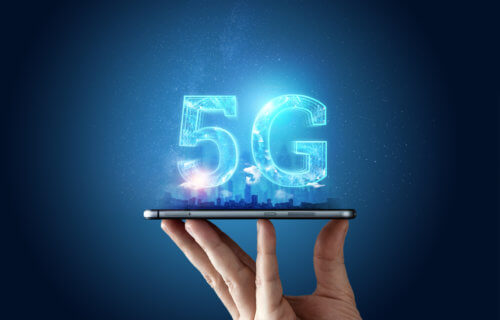NEW BRUNSWICK, N.J. — High-tech 5G networks are here and will likely be the new standard in wireless communications in the near future. For people who love to check the weather on their smartphone however, that new signal may actually be a problem. A new study finds radiation “leakage” from 5G networks may throw off weather satellites, giving you a bad forecast.
“Our study – the first of its kind that quantifies the effect of 5G on weather prediction error – suggests that there is an impact on the accuracy of weather forecasts,” says senior author Narayan B. Mandayam of Rutgers University in a media release.
Rutgers’ Wireless Information Network Laboratory (WINLAB) used computer modeling to look at how 5G “leakage” would alter the forecast for the 2008 Super Tuesday tornado outbreak in the Midwest. This leakage occurs when radiation from a transmitter crosses into an adjacent radio frequency band.
The study reveals 5G frequencies could leak into the same bands weather sensors use to measure water vapor in Earth’s atmosphere. Meteorologists use this information to forecast both temperatures and rain totals. The models show if 5G signals leak between -15 and -20 decibel Watts of power, they’ll likely throw off both weather readings. Researchers say that much leakage can shift the accuracy of precipitation measures by up to 0.9 millimeters and ground temperatures by 2.34 degrees Fahrenheit.
“It can be argued that the magnitude of error found in our study is insignificant or significant, depending on whether you represent the 5G community or the meteorological community, respectively,” Mandayam explains.
How 5G differs from current wireless networks
5G signals (or fifth-generation cellular wireless technology) carry more data at much greater speeds than the current 2G, 3G, and 4G networks. They use a larger bandwidth and higher frequency which extends to the millimeter wave (MMW) band.
These networks also use “beamforming” antennas which direct MMW bands straight at a user’s device. This is much different from older antennas which send out a wireless signal in all directions, which a device may or may not pick up over long distances.
Opponents of the new technology have made 5G a controversial subject. Other studies are working to disprove claims that MMW bands can be harmful to human tissue and even cause disease.
Improving weather tech for the 5G era
Study authors say 5G networks will be more widely available in the next two to three years. As more people convert to the high-speed signal, the study suggests the meteorology community will have to look at ways of improving their forecasting gear to accommodate this leakage.
“One of our takeaways is that if we want leakage to be at levels preferred by the 5G community, we need to work on more detailed models as well as antenna technology, dynamic reallocation of spectrum resources and improved weather forecasting algorithms that can take into account 5G leakage,” Mandayam concludes.
Meteorologists have already had to shift tactics once due to the COVID-19. Another study shows less air travel during the pandemic is giving weather teams less data to use in their forecasts.
The WINLAB study is published in the 2020 IEEE 5G World Forum, sponsored by the Institute of Electrical and Electronics Engineers.
